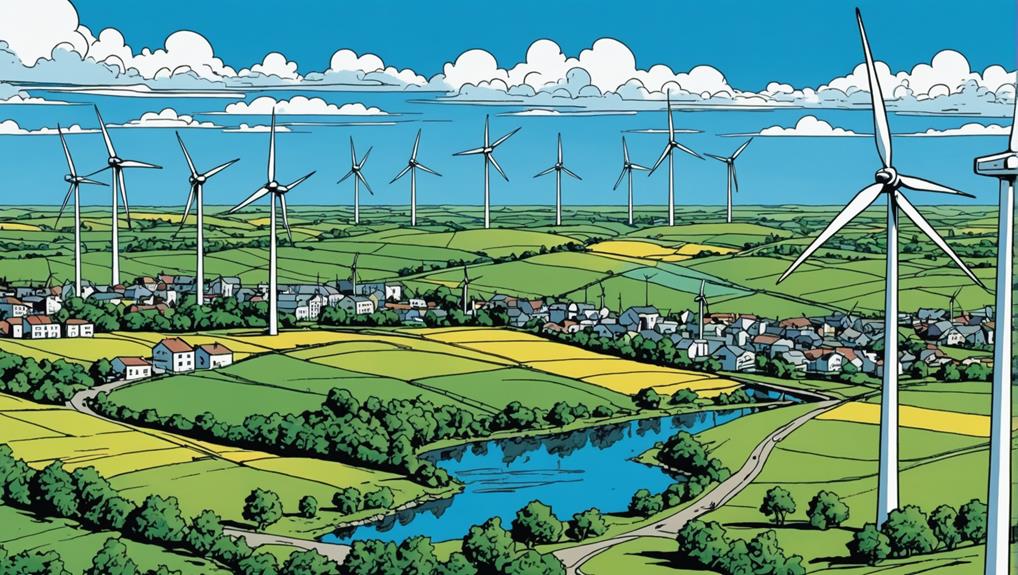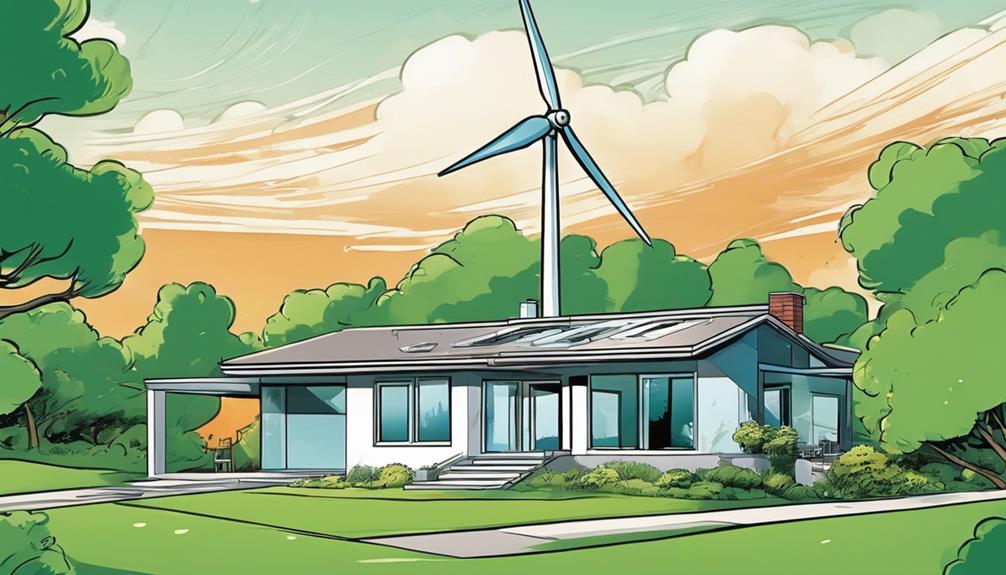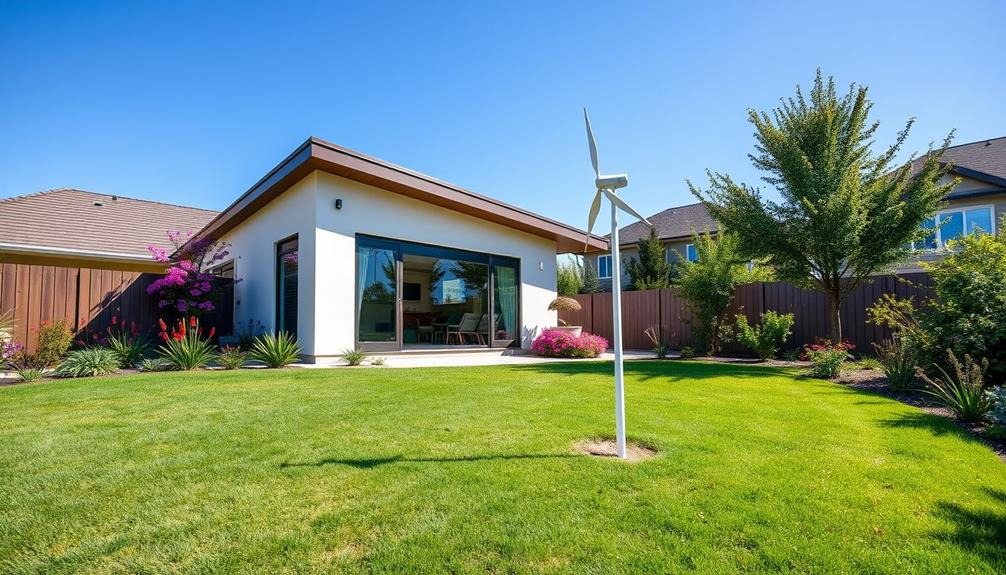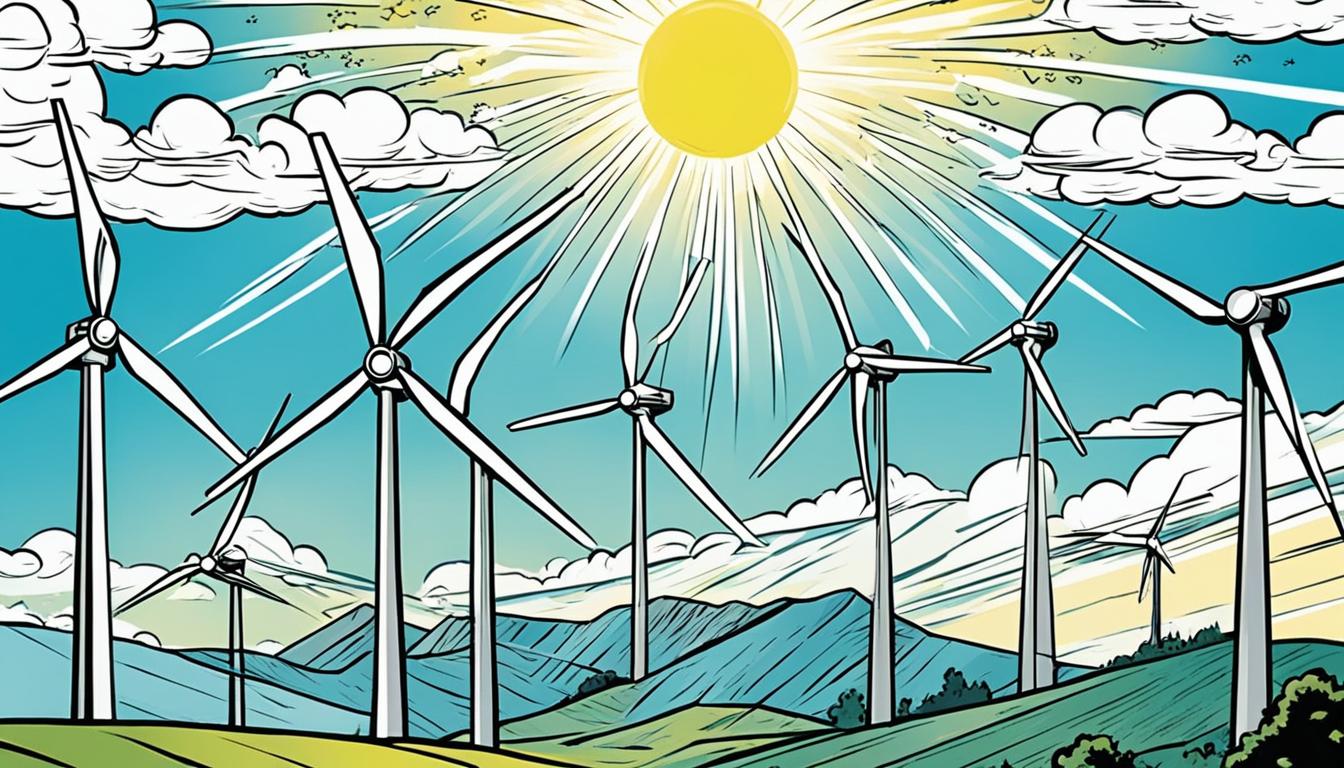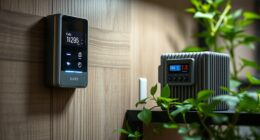Wind turbines take wind's kinetic energy, using rotor blades to turn it into mechanical energy. Then, a generator transforms this into electrical power within the turbine. The modern turbines with huge rotor blades grab more wind energy effectively. They come in varied sizes from individual to wind farms. Embracing wind's power, turbines produce clean, renewable electricity. The entire process showcases a blend of technology and nature. If you're curious about the complete operation and functionality of wind turbines, you'll discover more details that shed light on electricity generation and sustainability. One way to increase wind turbine efficiency is to implement technologies that enhance the capture and conversion of wind energy. For example, advanced blade designs and control systems can increase wind turbine torque, allowing the turbines to generate more power even in low wind conditions. By continually improving these technologies, the potential for wind energy to become a major source of renewable electricity continues to grow.
Key Takeaways
- Rotor blades capture wind energy.
- Mechanical energy is converted by a generator.
- Electrical energy is produced through induction.
- Electricity flows into the grid for use.
- Wind turbines reduce reliance on non-renewable resources.
Wind Turbine Basics
Converting the kinetic energy from the wind into mechanical energy, wind turbines play an important role in generating electricity.
The rotor blades of a wind turbine are pivotal in capturing this energy efficiently. As the wind blows, it causes the rotor blades to spin, converting the kinetic energy into mechanical energy.
This mechanical energy is then transferred to a generator within the turbine, where it's transformed into electrical energy.
The size of the rotor blades is significant, with modern turbines boasting blades that can span over 100 meters to capture more wind energy. This larger span allows for increased efficiency in electricity production.
Wind turbines come in various sizes, from small individual turbines to large ones in wind farms.
The advancements in wind turbine technology have led to enhanced efficiency, capacity, and reduced costs, making them a crucial component in the generation of renewable energy.
Types of Turbines
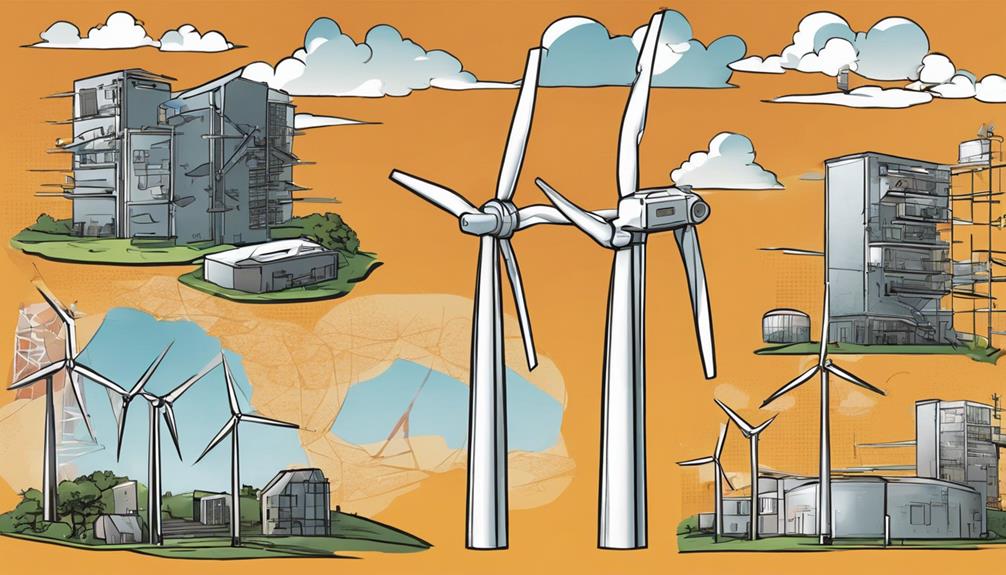
You'll learn about the various types of wind turbines and how their designs impact efficiency in electricity generation.
Understanding the differences in turbine designs can help you grasp how wind energy is harnessed more effectively.
From horizontal-axis to vertical-axis turbines, each type brings unique features that contribute to the overall efficiency of generating electricity from wind power.
Turbine Design Variations
Horizontal-axis turbines with three blades are the most common type used in wind energy production, showcasing a simple yet effective design. These turbines are primarily found in wind farms, where their efficiency and reliability make them a popular choice for generating electricity.
In contrast, vertical-axis turbines offer omnidirectional capabilities and come in various designs, making them suitable for diverse environments such as small wind installations.
Offshore wind turbines are a different breed, towering over the ocean to harness powerful winds for electricity generation. Their massive size and height enable them to capture the strong oceanic winds efficiently.
On the other hand, distributed wind turbines cater to localized power generation by being installed on the customer's side, offering a more decentralized approach to energy production. Additionally, small turbines integrated into hybrid systems are utilized in remote locations, where their efficient design contributes to sustainable and independent energy generation.
Efficiency in Electricity Generation
To enhance electricity generation efficiency through various turbine types, vertical-axis turbines provide unique designs that cater to diverse environments and offer omnidirectional capabilities. While horizontal-axis turbines are commonly used in wind energy generation, vertical-axis turbines present advantages in certain scenarios.
Vertical-axis turbines are known for their ability to generate power regardless of wind direction, making them highly efficient in capturing wind energy. Offshore wind turbines take advantage of powerful ocean winds, further enhancing efficiency by utilizing strong and consistent wind resources.
Distributed wind turbines, which are installed on the customer side, contribute to localized power generation and can improve overall efficiency by reducing transmission losses. Additionally, small turbines in hybrid systems play an essential role in remote locations where electricity generation may be challenging, showcasing the versatility of wind turbines in enhancing efficiency across various settings.
Turbine Applications
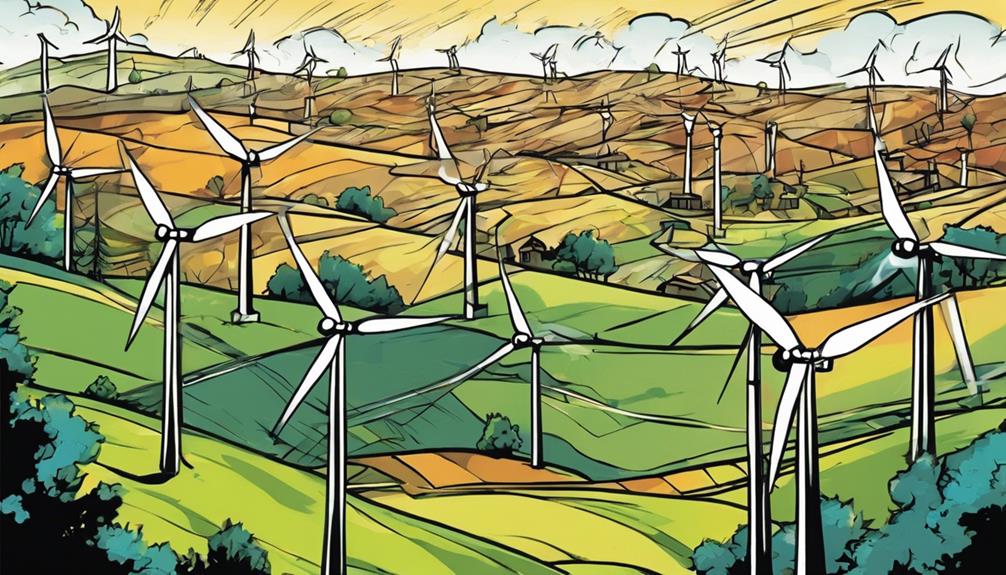
Various applications exist for wind turbines, ranging from small residential setups to large-scale wind farms. Wind turbines play a vital role in generating electricity both onshore and offshore, catering to diverse energy needs and environmental conditions.
Here are some key applications that showcase the versatility of wind turbines:
- Onshore Wind Farms: Onshore wind turbines are commonly seen across landscapes, harnessing wind energy efficiently to power homes, businesses, and communities.
- Offshore Wind Projects: Offshore wind turbines take advantage of strong ocean winds, providing a sustainable source of electricity for coastal regions and beyond.
- Distributed Wind Systems: Distributed wind turbines are installed closer to where the energy is consumed, offering a decentralized approach to electricity generation and promoting energy independence.
- Small Wind Turbines in Hybrid Systems: Small wind turbines in hybrid setups are ideal for remote areas, complementing traditional energy sources and reducing reliance on fossil fuels.
From the vast expanses of wind farms to the quiet efficiency of residential turbines, wind power continues to revolutionize the way we generate electricity.
Learning Resources
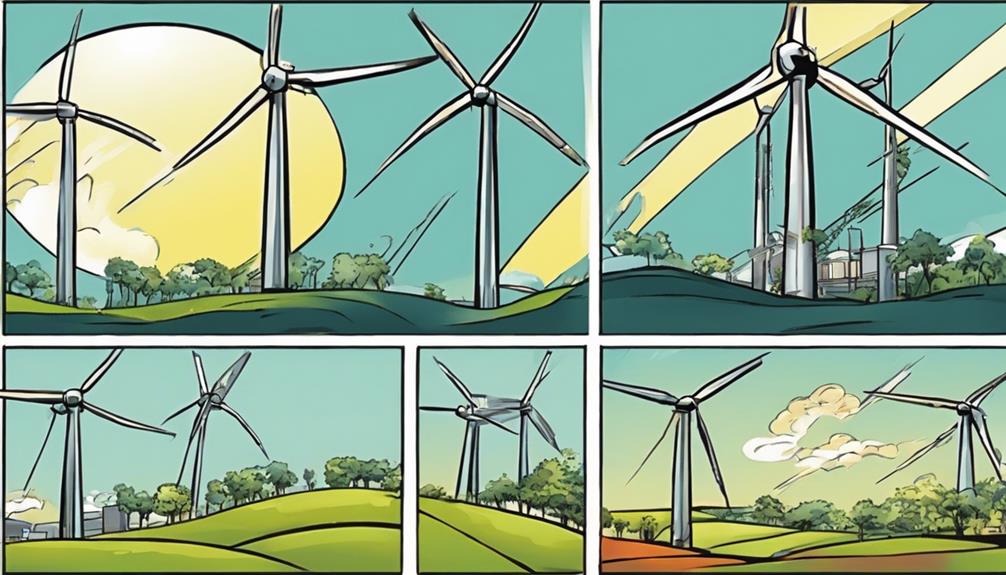
Explore valuable learning resources that can enhance your understanding of wind energy and its applications. The Small Wind Guidebook is an excellent resource for homeowners and small businesses looking to immerse in wind energy.
For K-12 students, WINDExchange offers a wealth of information on wind energy. Plunge into an Energy 101 video that simplifies the process of generating clean electricity from wind power.
Delve into the history of U.S. wind energy development to grasp the evolution of this renewable energy source. Discover intriguing facts about wind power and distributed wind energy through top 10 lists available online.
Consider organizing field trips to wind farms to witness firsthand how wind turbines operate and contribute to sustainable energy production. For students, incorporating wind energy projects into science fairs can be an exciting way to learn about renewable energy technologies and their impact on the environment.
Wind Turbine Overview
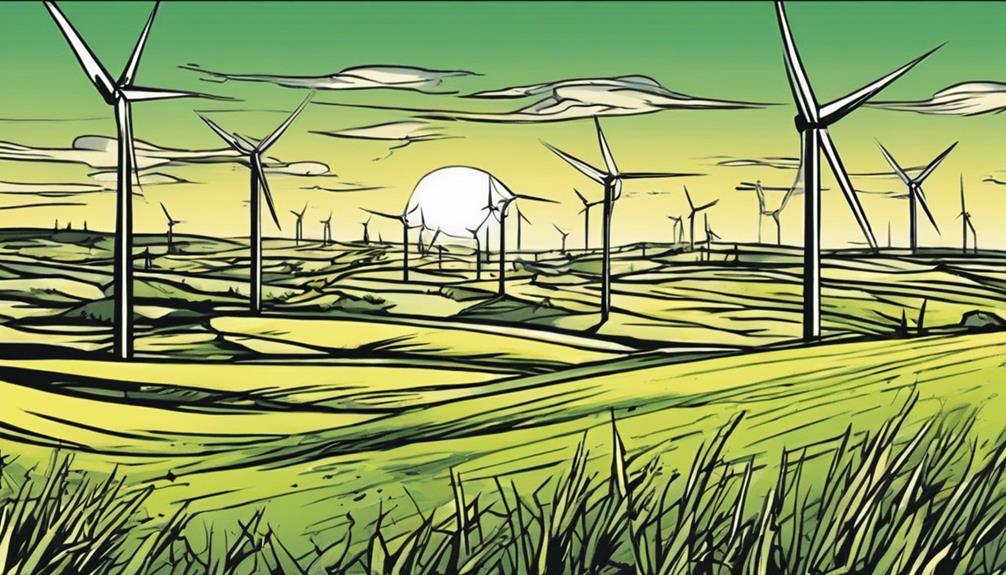
Learn how wind turbines efficiently convert wind energy into electricity through the rotation of rotor blades. Wind turbines harness the power of wind to generate electricity by utilizing the kinetic energy produced as wind turns the blades. This energy is then transformed into electrical power by a generator within the turbine.
Essential components like blades, rotor, generator, nacelle, and tower work together to ensure effective power generation. Modern wind turbines have varying capacities, with onshore turbines typically ranging from 3-4 MW, while offshore turbines boast larger capacities of 8-12 MW, showcasing technological advancements.
The efficiency of a wind turbine is heavily influenced by factors such as location, the ideal wind speed range, turbine size, and the implementation of regular maintenance practices.
- Feel the power of the wind as it propels the rotor blades into motion.
- Experience the innovation of modern wind turbine technology both onshore and offshore.
- Embrace the sustainability of renewable energy generation through wind power.
- Witness the seamless harmony of components working together to produce clean electricity.
Wind Farm Functionality

Wind farms consist of various components, including multiple wind turbines that work collectively to generate electricity.
Each turbine harnesses the power of the wind to produce electrical energy.
Understanding the functionality of wind farms sheds light on the process of electricity generation from renewable wind sources.
Wind Farm Components
Multiple components within a wind farm work together seamlessly to harness wind energy and convert it into electricity efficiently. The rotor blades play a pivotal role in capturing the kinetic energy of the wind, initiating the process of generating electricity.
Here are a few key components of a wind farm that work in unison to produce clean energy:
- Rotor Blades: These blades are designed to efficiently capture the energy from the wind.
- Generator: Converts the rotational energy produced by the rotor blades into electrical power.
- Nacelle: Houses the generator, gearbox, and other components essential for electricity generation.
- Tower: Provides the necessary height for the rotor blades to access stronger and more consistent wind speeds.
These components, meticulously engineered and integrated, form the backbone of a wind farm, showcasing the synergy between technology and nature to create sustainable electricity for a greener future.
Electricity Generation Process
Efficiently harnessing the kinetic energy of wind, wind turbines in a wind farm generate electricity through a seamless process involving rotor blades and a generator. As the wind turns the blades, they spin a shaft connected to a generator housed in the nacelle atop the tower.
Inside the generator, the rotational energy is converted into electrical energy through electromagnetic induction. This electricity flows through cables down the tower and into the grid, ready to power homes and businesses.
The electricity generation process in a wind farm is essential for sustainable energy production, reducing the dependence on non-renewable resources and cutting down on greenhouse gas emissions. By efficiently converting wind power into clean electricity, wind farms play a significant role in providing a renewable energy source for communities.
Harnessing the power of the wind, these farms contribute to a greener future for all.
Wind Turbine Operation
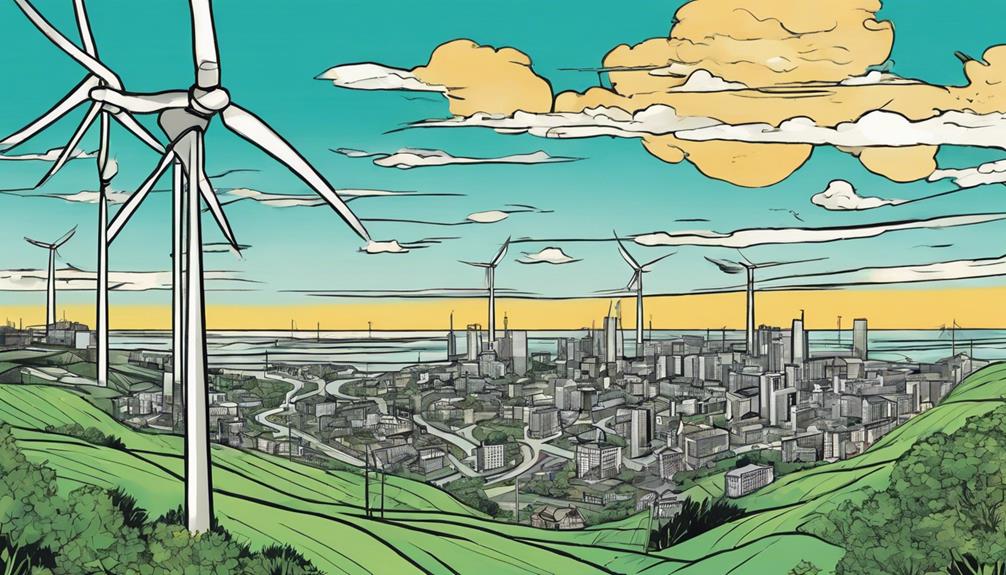
Operating by harnessing the kinetic energy of wind, wind turbines turn rotor blades to generate electricity efficiently. The process involves the conversion of wind energy into electrical power through a series of mechanical and electrical transformations.
Here are some intriguing aspects of wind turbine operation:
- Sustainable Power: Witnessing the graceful rotation of wind turbine blades reminds you of the clean and renewable energy being produced.
- Innovative Technology: The seamless integration of advanced technology in wind turbines showcases human ingenuity in harnessing natural resources.
- Environmental Impact: Knowing that each rotation of the turbine blades contributes to reducing carbon emissions can evoke a sense of environmental responsibility.
- Power of Nature: Seeing wind turbines in action highlights the sheer power of nature and how we can utilize it for electricity generation.
These elements combined create a mesmerizing symphony of sustainability and innovation in offshore wind power generation.
Turbine Color Significance
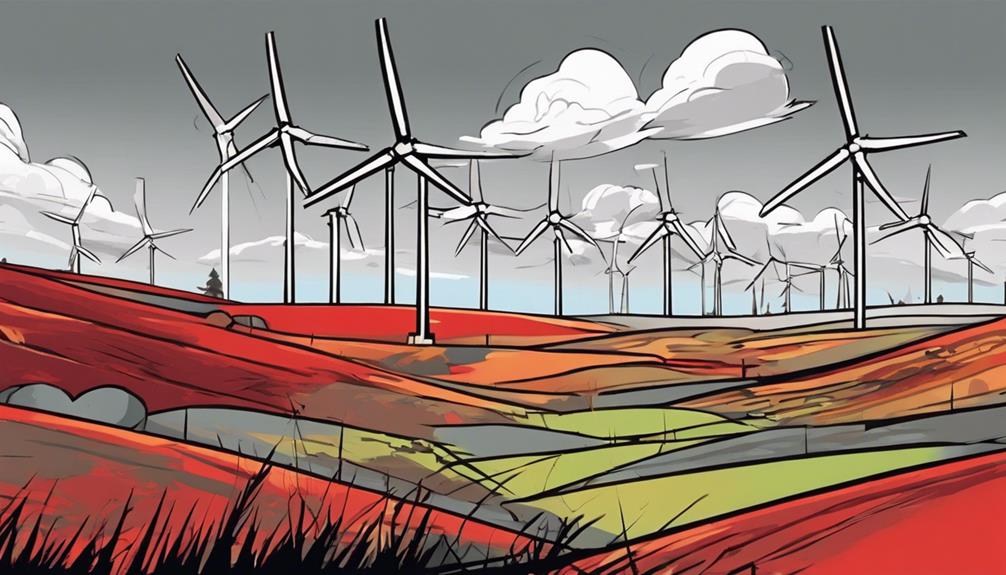
Considering the importance of turbine colors, their selection for wind turbines plays a crucial role in environmental blending and safety. The aesthetics of wind turbines are a significant factor in their acceptance within communities and landscapes. Typically, wind turbines are painted white or pale grey to minimize their visual impact and blend into the surroundings.
Furthermore, specific color schemes are mandated in some regions to enhance visibility and safety, especially in low light conditions or areas with high air traffic. The choice of turbine colors can vary globally based on regulations and aesthetic considerations. Discussions surrounding alternative colors aim to improve the environmental integration of wind turbines further.
Wind Speed Requirements
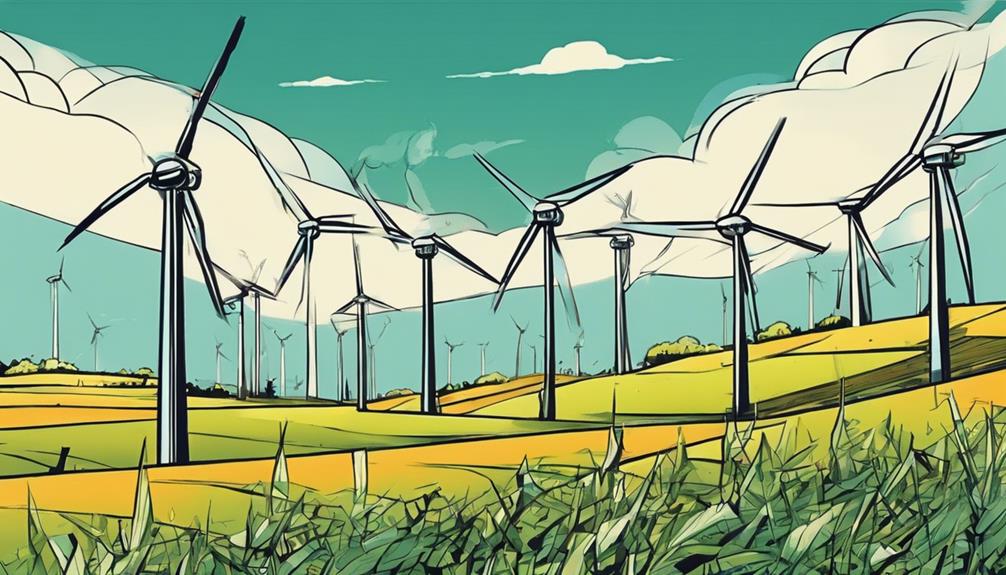
Wind turbines typically require a minimum wind speed of 7 mph to begin generating electricity efficiently. The efficiency of wind turbines peaks at around 18 mph, making this wind speed ideal for best electricity generation. Wind speeds between 7 mph and 56 mph fall within the operating range for most wind turbines, ensuring a steady flow of power. These machines are built to endure fluctuating wind speeds, guaranteeing a consistent and reliable electricity production process.
- Feeling the gentle breeze at 7 mph kickstarting the turbines fills you with anticipation for the green energy to come.
- The sweet spot of 18 mph, where electricity generation peaks, evokes a sense of satisfaction in knowing maximum efficiency is achieved.
- The wide operating range of 7-56 mph reassures you that power will be generated even when the wind fluctuates.
- The resilience of wind turbines against varying wind speeds provides a sense of security, ensuring a continuous flow of electricity.
Frequently Asked Questions
How Does Electricity Get From Wind Turbines to the Grid?
You want to know how electricity reaches the grid from wind turbines. It's done through transformers that adjust voltage for national distribution. Wind-turbine electricity is sent to the National Grid network, supporting sustainable energy consumption.
How Do Wind Turbines Generate Electricity Without Wind?
You can't generate electricity without wind. Wind turbines need wind to turn their rotor blades, creating kinetic energy that powers the generator. Without wind, there's no movement to convert into electrical energy.
What Are the Disadvantages of Wind Energy?
When considering wind energy, remember the grass isn't always greener on the other side. Disadvantages include intermittency, opposition due to noise/visual impact, bird/bat collisions, high investment costs, and storage challenges for consistent power supply.
How Is Electricity Generated by Wind Turbines Transmitted Through?
To transmit electricity from wind turbines, transformers increase voltage for the national grid. This enables efficient distribution to homes and businesses, supporting energy independence and reducing emissions. Wind power can be used privately for sustainable consumption.
Can the Same Principles of Wind Turbine Electricity Production be Applied to a Mini Wind Turbine?
Yes, the same principles of wind turbine electricity production can be applied to a mini wind turbine. Just like a standard wind turbine, a mini wind turbine generates electricity through the kinetic energy of the wind turning its blades. This smaller scale option is great for powering small devices or providing energy in remote locations.
Can Wind Turbines Generate Electricity for Off-Grid Use?
Yes, connecting wind turbine battery can provide off-grid electricity. Wind turbines generate power by harnessing wind energy and storing it in batteries. This stored energy can be used to power homes and businesses that are not connected to the traditional electrical grid.
Conclusion
Now that you've seen how wind turbines generate electricity, consider the impact of harnessing nature's power for renewable energy.
By understanding the technology behind wind farms, you can appreciate the balance between innovation and sustainability.
So next time you see those towering turbines spinning gracefully in the wind, remember the incredible potential they hold for a cleaner, brighter future.
